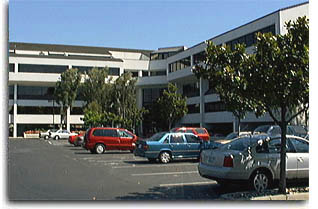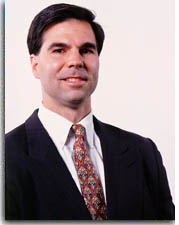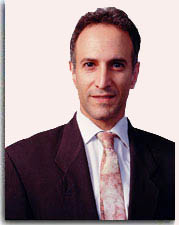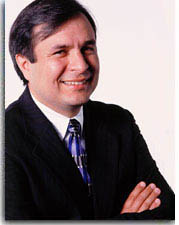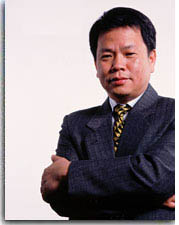| |
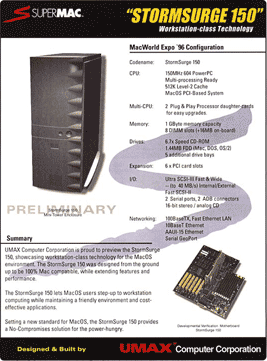
Early StormSurge 150 datasheet; click for full-size.
Whether the S900 started life as Radius' third, fourth, fifth, or sixth Mac system effort is a matter of perspective (and memory). The Radius Rocket, hailing from the early 90's, was a NuBus-based 68040-based accelerator with its own RAM and SCSI interface. It could operate either as a straight accelerator or a system-within-a-system, and was quite a bit more complicated than it looked. It was also close enough to being a full computer to make Apple uncomfortable. Stick a serial, ADB, and monitor port on there, and it would be an unlicensed Quadra clone. Radius had to promise not to go in that direction. Radius did not, however, promise not to go in an even more ambitious direction: loading up a rackmount case with dozens of Rockets as a sort of render farm, to be controlled by a genuine Apple Quadra and with utterly obscene processing power. The "Skylab" project burned through utterly obscene amounts of money before it was killed. Radius finally got to bring a real Mac system to market in early 1995 as one of the world's first official Mac clones, the Radius System 100 (which was the production-version of Radius' DV Workstation). A PowerPC 601-based mini-tower touted as a professional digital video workstation, the System 100 was limited by the same poor NuBus performance that marred all early PowerPC machines. Radius followed up with the 81/110, a marginal improvement over its predecessor. 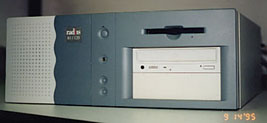 The Radius 81/120. The Radius 81/120.The next and last Radius system, a victim of bad timing named the 81/120, came in a desktop orientation that somewhat resembled the later SuperMac J700 and saw release only as a RIP host sold through Splash Technology.
| | |
UCC was about as much fun as possible from the day it launched. New employees were imparted the official company creed upon entrance to the second floor -- "You can bring your dog to work" -- and one of the conference rooms was dubbed "The Enchanted Tiki Room" and decked out in full Hawaiian splendor. (The ex-Radius crew always knew how to party, with or without dogs.) Lunch hours were devoted to stress-testing the internal network with mass Marathon gameplay. Stan Robbins and Rick Rice (Manufacturing Logistics & Engineering, if I recall correctly) were nearly unstoppable... until Curtis Kimm (QA Manager) and David Theroff (IT Director) built a series of secret, hidden rooms into the Marathon arena map, loaded with weapons, and waged gratuitous explosions on the rest of us. (In our defense, even with an arsenal at his disposal, Curtis still got his posterior whipped.)
The first SuperMac computer to hit the market was the S900. It had actually been born at Radius by the Systems group as their first 604/PCI-based machine. Known in development as the StormSurge 150, it came in two basic flavors, only one of which really matters. The "S900D" was a "Deconfigured" system, essentially a working shell of an S900 which value-added resellers would purchase to customize and resell to their own clients. (There's really no reason to waste memory cells on the S900D, which was more a Marketing name than an actual model designation. Take any S900, configure it as bare-bones as possible, and call it an S900D.) The S900 that typically sold through retail was the "S900L," a fully "Licensed" system, and it was the basis for all S900 offerings from the S900/150 to the S900 DP/250 RAID.

The S900 (pick a letter) was an immediate critical and commercial success. Six PCI slots, up to 1+ GB of RAM, numerous internal drive bays, multiple audio jacks, a secondary processor slot for very easy upgrades to a dual-processor configuration, and the most stylish case in the Mac world. It was a no-brainer that UCC's first product would be an expensive box designed for serious power. The development team had just come from Radius, where the best revenue was in high-end digital video and color pre-press products -- so naturally, the high-end was on everyone's mind. The market data to justify such a machine had been in Radius' hands for years, and Apple, despite having served the mainstream fairly well, hadn't built a dream system for the power users of the day since the Quadra 950.
One element of the S900 that got deservedly mixed reviews was the swing-out door which masked the drive bays from view. It looked great when closed. But closed, the CD-ROM drive, Zip drive, and any other such devices were inaccessible. Ideally, the CD-ROM drive tray would push the door open. Ideally. Unfortunately, as CD-ROM drive loading mechanisms aged, they didn't always have the strength to overcome the door's locking pin. Ejected Zip and Floppy disks would simply hit the inside of the door with a sickly thunk and do nothing. And even if the CD-ROM tray could open it, it might get stuck on the inner door brace while attempting to retract. This led many S900 owners to simply remove the door, often breaking one or both of its hinge pins in the process. There was a constant stream of requests into UCC for replacement doors, doors that opened more easily, doors that would let the CD-ROM tray retract without a fight, and so on. Eventually, a limited number of replacement doors were made which had a catch pin to hold the door open, but the other problems were not addressed -- and existing customers (as well as internal employees) could not easily obtain one of the new doors. All things considered, however, the door's problems were annoying but very minor inconveniences in such a well-designed system.
The S900 had gotten UCC off to a strong start, but there were other markets than high-end graphics to capitalize. Almost immediately, it was time to diversify.
Continue to The Middle... |
